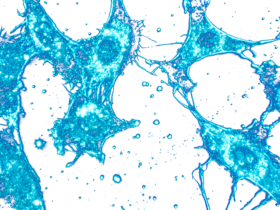American Type Culture Collection Standards Development Organization Workgroup ASN-0002 (2010) Cell line misidentification: The beginning of the end. Nat Rev Cancer 10: 441-8. PMID: 20448633.
Buehring GC, Eby EA, Eby MJ (2004) Cell line cross-contamination: How aware are Mammalian cell culturists of the problem and how to monitor it? In Vitro Cell Dev Biol Anim 40: 211-5. PMID: 15638703.
Capes-Davis A, Theodosopoulos G, Atkin I, Drexler HG, Kohara A, Macleod RA, Masters JR, Nakamura Y, Reid YA, Reddel RR, Freshney RI (2010) Check your cultures! A list of cross-contaminated or misidentified cell lines. Int J Cancer 127: 1-8. PMID: 20143388.
Drexler HG, Dirks WG, Matsuo Y, MacLeod RA (2003) False leukemia-lymphoma cell lines: An update on over 500 cell lines. Leukemia 17: 416-26. PMID: 12592342.
Hughes P, Marshall D, Reid Y, Parkes H, Gelber C (2007) The costs of using unauthenticated, over-passaged cell lines: How much more data do we need? Biotechniques 43: 575, 577-8, 581-2 passim. PMID: 18072586.
Lorsch JR, Collins FS, Lippincott-Schwartz J (2014) Cell Biology. Fixing problems with cell lines. Science 346: 1452-3. PMID: 25525228.
MacLeod RA, Dirks WG, Matsuo Y, Kaufmann M, Milch H, Drexler HG (1999) Widespread intraspecies cross-contamination of human tumor cell lines arising at source. Int J Cancer 83: 555-63. PMID: 10508494.
Masters JR (2002) False cell lines: The problem and a solution. Cytotechnology 39: 69-74. PMID: 19003294.
Nardone RM (2007) Eradication of cross-contaminated cell lines: A call for action. Cell Biol Toxicol 23: 367-72. PMID: 17522957.
Image Credit: Tom Deerinck, NIGMS, NIH (via NCI Visuals Online). Public domain.
















